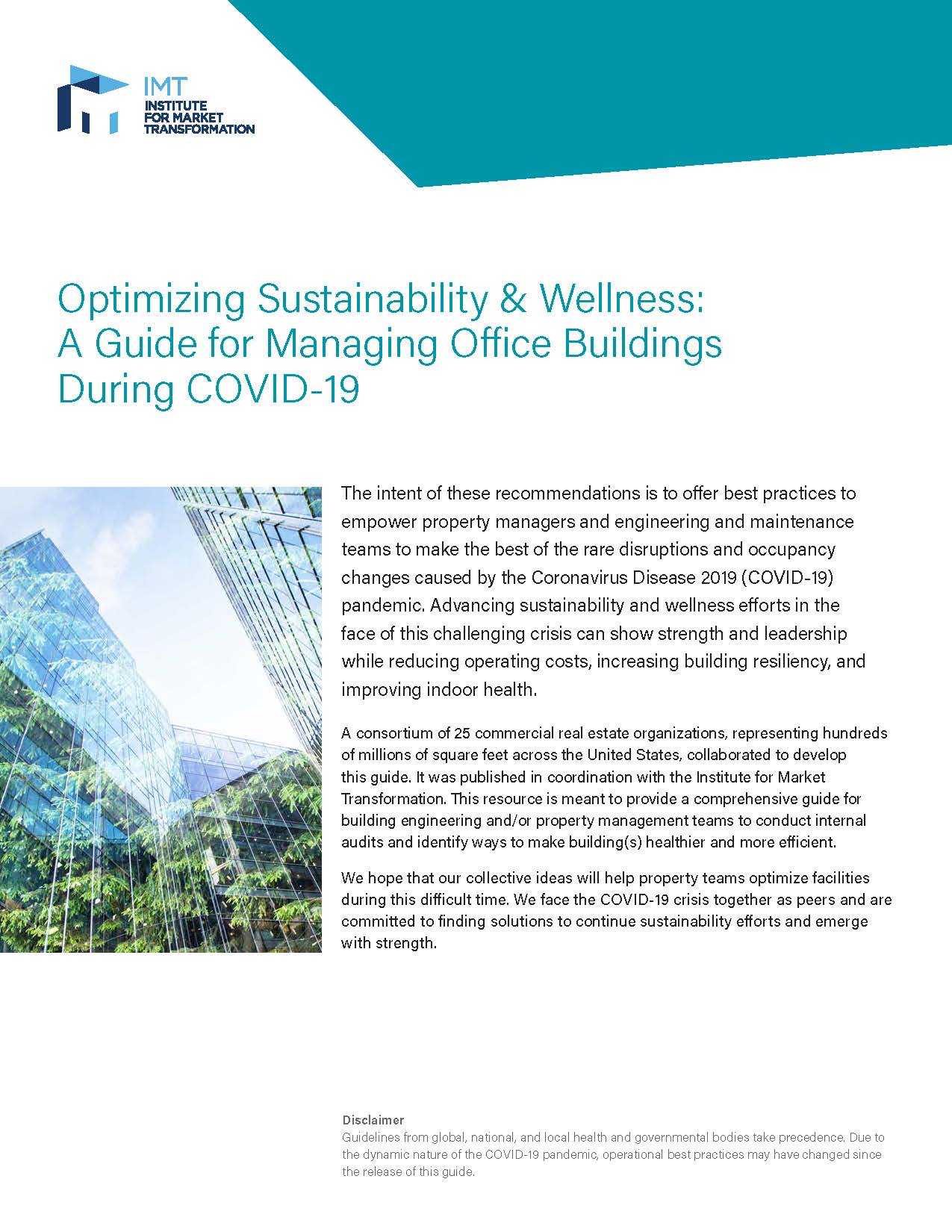This blog post originally appeared on the Building Innovation Hub‘s site and is reposted here.
The Building Innovation Hub and the AOBA Educational Foundation hosted a webinar to explore how actions being taken today by DC’s commercial building owners and operators to address the current COVID-19 pandemic are being used to set up properties to remain competitive in a complicated market and to help with compliance with the Building Energy Performance Standards (BEPS). You can watch the full event recording on YouTube.
Guest speakers included:
- Joe Reilly. General Manager, Asset Services, Akridge
- Jackie Duke. SVP, Operations and Sustainability, Brookfield Properties. President, AOBA
- Eric Tilden. Director, Sustainability, Cushman & Wakefield
Below are major takeaways from that discussion.
1. Make the most of what you have
Both Duke and Tilden emphasized the need to make the most with a building’s current systems – understanding what’s possible and what existing systems are capable of doing and maximizing those options before jumping to new technology solutions.
In response to a question about helping building owners, Tilden said, “As we look at our portfolio we’re really looking at ensuring we have solid operations and we’re going back to basics about a lot of these things. We’re optimizing what we have and we’re not jumping the gun on implementing vastly different technologies in the buildings quite yet because we don’t know how the world will change.”
Opportunities for operational improvements included working with a controls contractor to adjust and maximize BAS systems, installing sensors to analyze occupancy and IAQ, conducting in-house retrocommissioning on mechanical and lighting systems, adjusting sequences of operation, and making adjustments in tenant spaces while occupancy remains low.
2. Take the long view
As owners and operators are looking to drive down operating costs within their building’s current infrastructure, this creates an opportunity to understand exactly how a building is performing, what is possible, and where opportunities exist for improvements. This is beneficial not only to respond to current demands, but also to evaluate strategies to improve building performance in the long-term.
The pandemic is greatly accelerating trends toward more sophisticated controls, particularly the need for more granular and specific levels of data obtained via sensors. This is likely to have a big impact on building efficiency and performance in the years ahead. “We’re seeing technology advancing for COVID, but there are things like occupancy and IAQ sensors for example … they’re developing them for use for COVID and we’re going to be using them for efficiency in the future. I think that’s happened a lot faster because of COVID and I think in the long run we’re going to develop strategies for both; they’re not mutually exclusive,” Duke said.
Above all, it’s critical that any improvements increase the flexibility of operations. While many occupants may return to the office when vaccines become widely available, it could be likely that remote work remains popular and tenant occupancy be uneven. Solutions should account for occupancy variation in tenant zones.
3. Engage with your tenants and utilize the period of low occupancy
Tenant retention is a huge concern for the commercial building industry, which means that engaging with tenants, even during periods of low occupancy, is critical to increase tenant confidence in building management’s ability to provide a healthy, safe workplace and a positive overall relationship. This can include communications around improvements to common areas, adjustments to building systems, providing options available within tenant spaces, or achieving relevant certifications. “Every building, every tenant is different. But one of the things that we really push across the board is communication … we have had tenants reach out and ask for more details … we’re happy to supply all and any information to make them feel comfortable and what we’re doing in our best practices to have them feel safe—and be safe—when coming back into these buildings,” said Tilden.
This proactive communication gives building owners and operators an opportunity to understand how their tenants are currently using the building, which allows operators to conduct maintenance or make improvements to tenant spaces during normal business hours that may not be allowed during times of normal occupancy.
“Now you have an opportunity to do improvements during regular commercial hours for a cheaper cost. In a lot of cases sometimes the building engineer is doing some easy retrofits … it’s definitely a cost-effective way of improving the building,” said Tilden.
More Resources
- Visit AOBA’s events page
- Visit the Hub webpage on health and energy performance
- Download the Operations and Maintenance guide, produced with AOBA Educational Foundation
- Subscribe to the Hub newsletter

